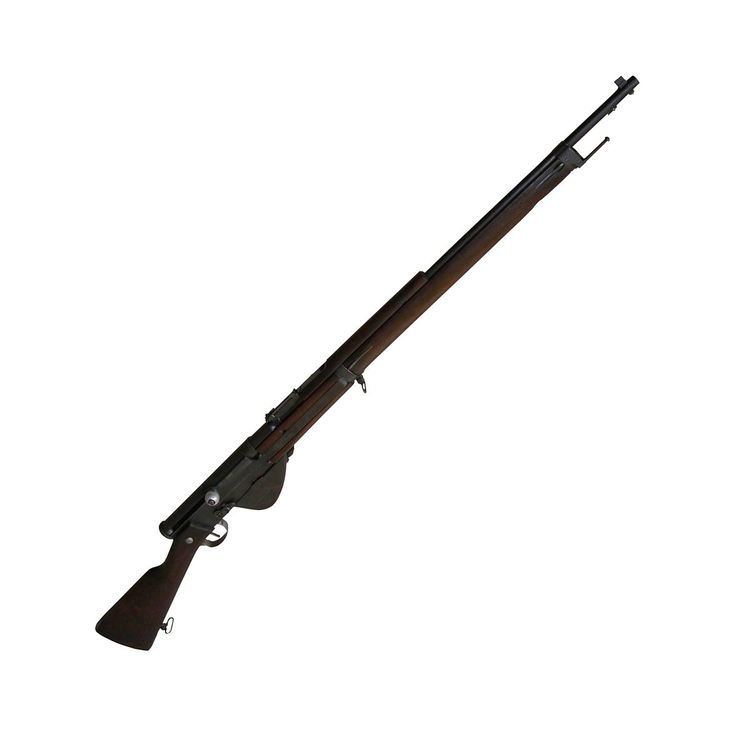In service 1917–1926 | ||
 | ||
Wars World War IRif WarWorld War II (limited) Designer Ribeyrolles, Sutter, Chauchat | ||
The Fusil Automatique Modèle 1917 (also called the RSC M1917) was a semi-automatic, gas-operated, infantry rifle that the French Army placed in service during the latter part (1918) of World War I. It was chambered in then-standard 8mm Lebel, the rimmed cartridge used in other French Army infantry weapons of the time. Altogether, MAT (Manufacture d'Armes de Tulle) had manufactured 86,000 RSC M1917 rifles when their production run ended in late November 1918. However very few have survived in fully functional, semi-automatic condition and those have become highly sought-after collectibles.
Contents
Development
The adoption of the Modèle 1917 can be traced to early attempts by the French Army to replace its Lebel rifles with a more advanced semi-automatic design in the years before the outbreak of the First World War. In 1913, a semi-automatic rifle was selected to be adopted as a replacement for the Lebels and Berthiers in the army's inventory. In 1910 the army tentatively adopted the semi-automatic long recoil operated Meunier rifle as a replacement for the Lebel rifle. Considerable delays were experienced in the final choice for the ammunition, which ended up being a powerful rimless proprietary 7×56.95mm round. Only 1,013 Meunier rifles had been manufactured by 1916 and about 300 were sent for field trials in the trenches. They were well received but the special ammunition problem was a major handicap.
The M1917 RSC (for: Ribeyrolles, Sutter and Chauchat) was formally adopted in May 1916 and a fairly large number (86,000) had been manufactured by November 1918. It was less expensive to manufacture than the Meunier rifle since it used standard Lebel rifle components, notably: the barrel, stock, handguard, barrel bands and trigger guard. Above all else, it was chambered for the standard 8mm Lebel ammunition, which was loaded on special five-round en-bloc clips. The Mle 1917 RSC was gas operated with a rotating bolt, the gas port being located underneath the barrel and near the muzzle as in the later M1 Garand rifle. The Mle 1917 was widely distributed among French infantry during 1918. However the troops did not like it as they found it too heavy, too long and too difficult to service and to maintain in the trenches. The weak point of this rifle was the size of the gas port located under the front end of the barrel. Because of its very small internal diameter the gas port tended to foul up with repeated firings thus leading to weaker and weaker bolt returns in prolonged use. Hence the gas port required frequent cleaning out (every 100 rounds or so) which could be performed after removing the large brass screw under the front end of the barrel. Furthermore, the special clip for the Mle 1917 was not particularly strong.
Following as a substantial improvement, the Mle 1918 RSC was adopted in 1918 as a rifle planned to replace all other rifles beginning in 1919. It was shorter and lighter than the Mle 1917 RSC and corrected all the Mle 1917 RSC drawbacks. For instance, the Mle 1918 RSC used the standard and better 5-round Berthier clip instead of the proprietary clip of the Mle 1917 RSC. The gas take-off system was greatly simplified and made easier to access and keep clean. In addition there was now a bolt hold-open device located on the right side of the receiver that went up automatically after the clip's last round had been fired. Firing tests had also shown that the Mle 1918 RSC was more accurate than both the Lebel rifle and the Mle 1917 RSC. The Mle 1918 RSC's production did not begin until November 1918 at MAS (Manufacture d'Armes de Saint-Etienne). Only 4,000 were made, most of them in 1919, and many were tested in combat during the Rif War of 1921–26 in Morocco, where "they gave complete satisfaction".
Museum displays
The Musée de l'Armée, Les Invalides, Paris, France displays both the Mle 1917 RSC and the Meunier rifle as a part of the permanent World War I (1914–1918) arms, uniforms and equipments exhibits. Within the US, the United States Army Ordnance Museum, the US Military Academy museum at West Point, and the National Rifle Association Museum all display excellent specimens of the Mle 1917 RSC. The much rarer Mle 1918 RSC is currently not displayed in any public museum exhibits either in the US or in Europe.
